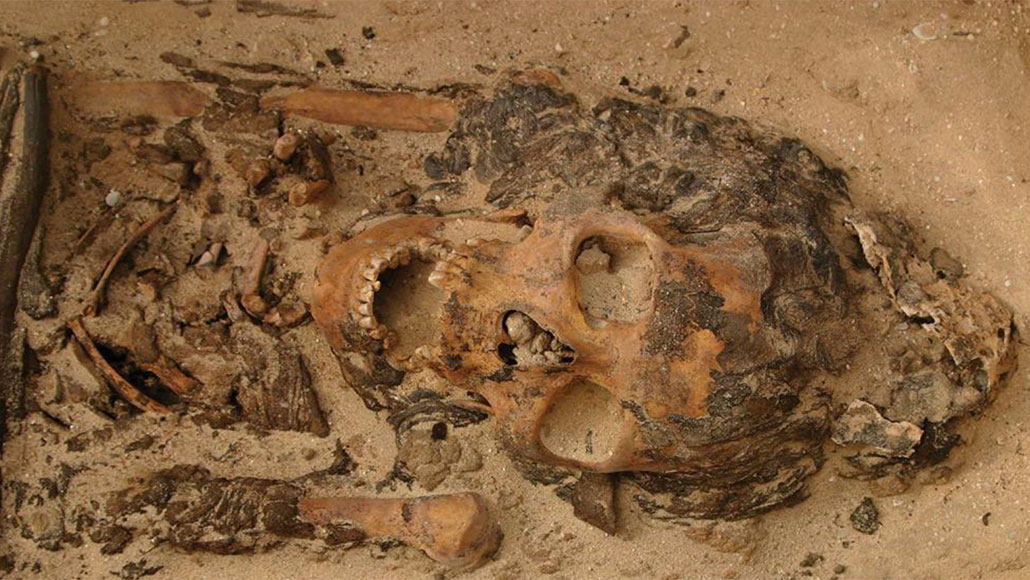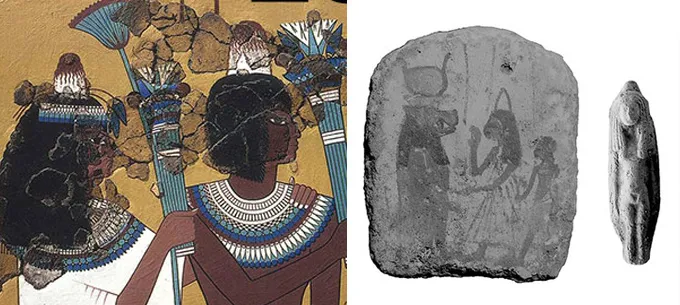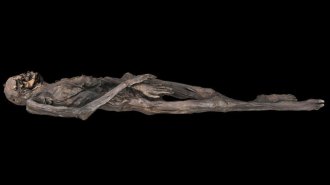Archaeologists have finally found ancient Egyptian wax head cones
The mysterious headgear appears often in art dating from around 3,550 to 2,000 years ago

Excavations at the ancient Egyptian city of Amarna uncovered the skeleton of a woman in her 20s who was buried wearing a cone-shaped cap that likely held spiritual significance, researchers say.
Courtesy of the Amarna Project, Antiquity Publications Ltd.








